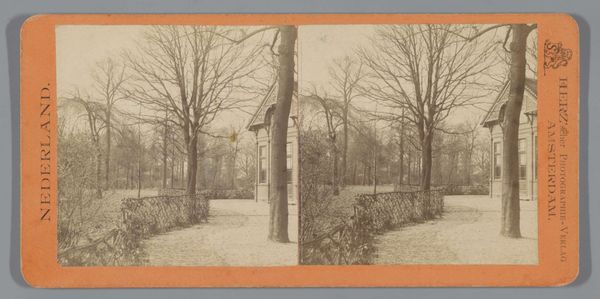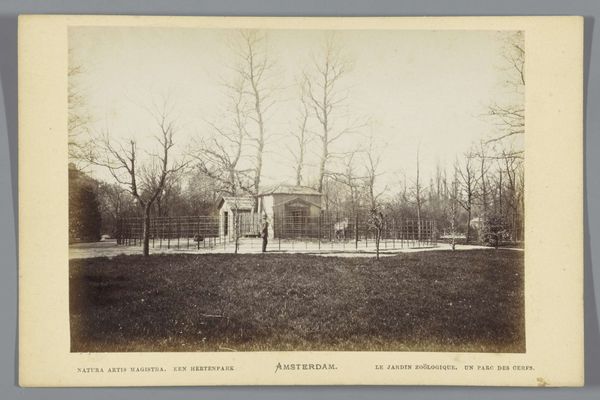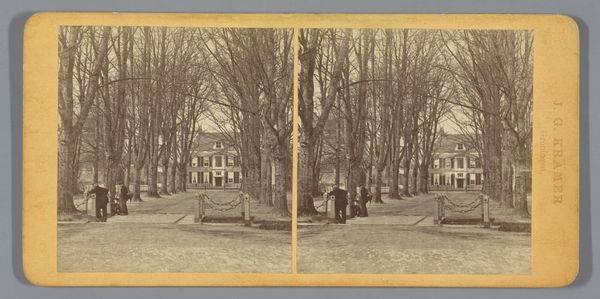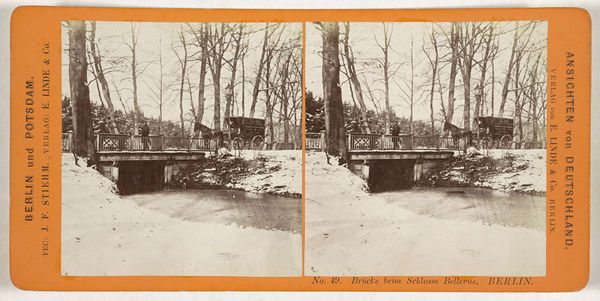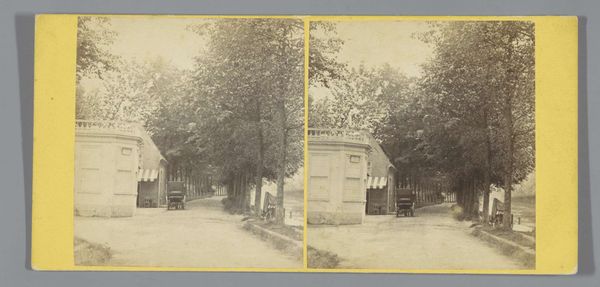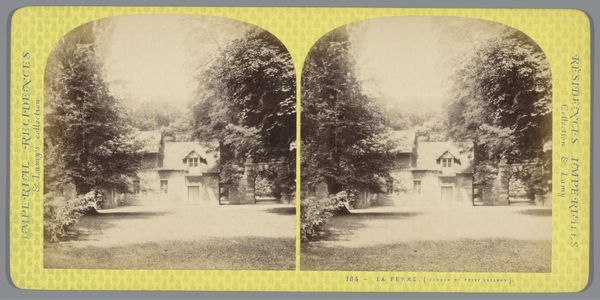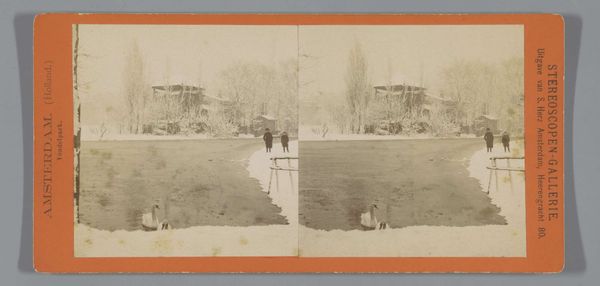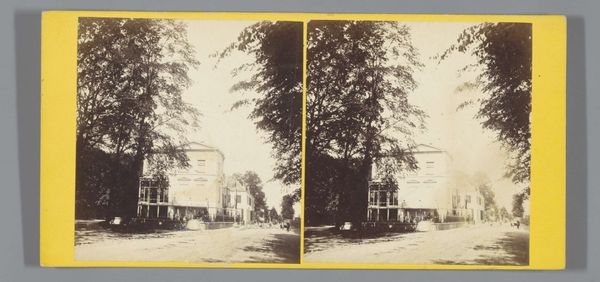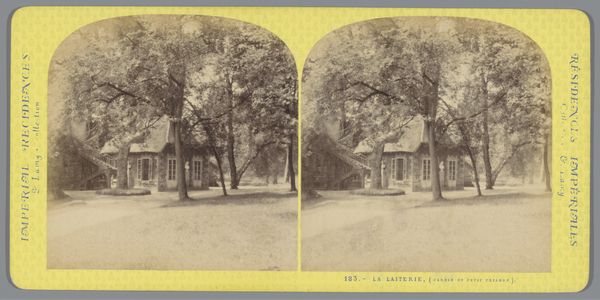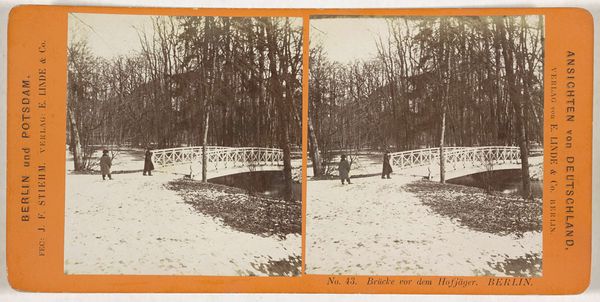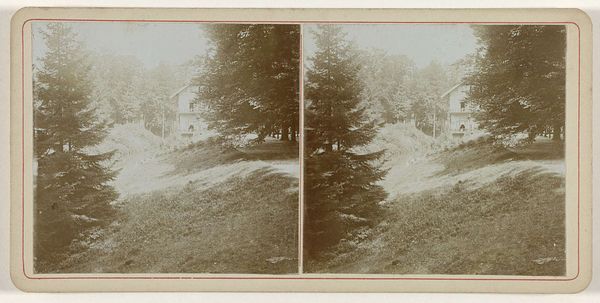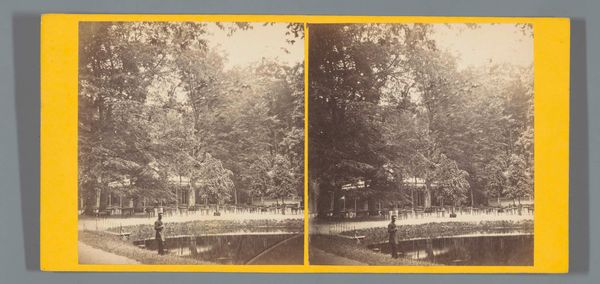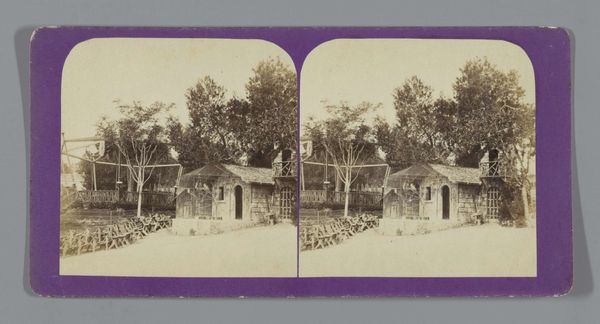
Ingang van restaurant Hofjäger in de Großer Tiergarten, Berlijn 1868 - 1870
0:00
0:00
Dimensions: height 86 mm, width 176 mm
Copyright: Rijks Museum: Open Domain
Curator: Here we have a gelatin-silver print, a stereoscopic photograph, created between 1868 and 1870 by Johann Friedrich Stiehm. The image depicts the entrance to the Hofjäger restaurant in Berlin's Tiergarten. Editor: My initial reaction is a certain melancholy. The bare trees, the faded tones... it feels like a study in absence, doesn't it? The image seems to evoke a specific historical context too. Curator: It does. Stiehm captured many architectural and landscape scenes, preserving moments in time through the relatively new medium of photography. The romantic undertones reflect an idealization of nature juxtaposed with urban life. Note the formal symmetry of the restaurant's entryway, almost temple-like in its structure. This "entrance," the threshold, almost represents Berlin as a place. Editor: And what was Berlin becoming? Think of the social tensions and burgeoning nationalism in the newly unified German Empire during that time. The Hofjäger was likely a space for the elite, those benefiting from this power shift, where ideas around nationhood were formulated. So the melancholic feeling isn't just about the faded image; it reflects a disappearing way of life for some, and an exclusionary one for others. It certainly wasn’t available to everyone. Curator: Precisely! The symmetry evokes a sense of order, but it could be an illusion— a desire to mask the underlying societal issues of a rapidly changing metropolis. Even the carefully placed trees seem almost too picturesque. Editor: I wonder who gets to move along that clean path? I imagine seeing class division along a path through the park. Curator: That’s astute, highlighting the often-unacknowledged perspectives within a seemingly simple photograph. Editor: Examining images such as Stiehm’s “Entrance to the Hofjäger Restaurant,” then, pushes us to confront what and, more importantly, who is left out of idealized depictions of city life. It challenges us to excavate the full, complicated stories within what might first appear to be a romantic landscape. Curator: Yes. It encourages us to delve beyond aesthetics, inviting critical engagement with history through visual artifacts, expanding not just who is included, but who controls access in general.
Comments
No comments
Be the first to comment and join the conversation on the ultimate creative platform.
